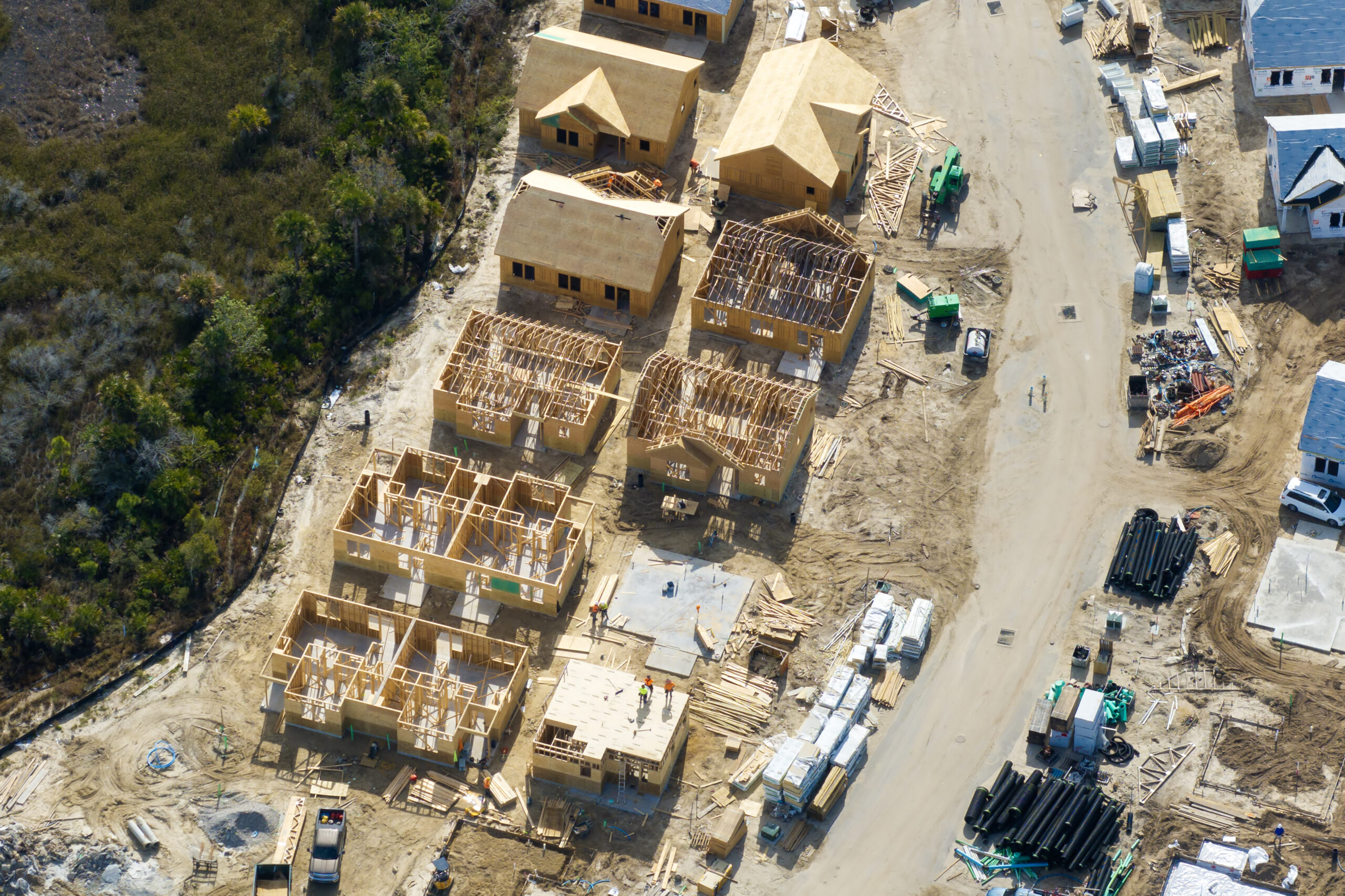There’s one question on every aspiring and active real estate investor’s mind: Is it a good time to buy? The answer is…it depends! However, understanding the real estate market cycle and housing supply is a great place to start.
As Ecclesiastes 8:6 says, “For there is a proper time and procedure for every matter, though a person may be weighed down by misery.” This blog will help you understand the proper time and the proper procedure to use when it comes to investing in real estate.
When discerning the right time to buy, consider three things:
- Where is the economy at large?
- What is the real estate market cycle like in your investing territory?
- What is God’s timing for your investment strategy–what is He leading you to purchase, sell, and/or hold in this season?
So, let’s break down the four phases of the real estate market cycle and the key indicators to help you determine the best time to buy.
What Is the Real Estate Market Cycle?
The real estate market moves in cycles, just like the stock market or economy. These cycles impact property values, investment opportunities, and overall profitability. Understanding these phases will help you choose the right strategy at the right time.
1. Recovery
The recovery phase follows a recession, but the general public may not realize the shift right away. During this phase, the market is still sluggish and consumer confidence remains low. However, savvy investors recognize opportunities where others see obstacles.
Signs of Recovery:
- High vacancy rates begin to decline
- Property values are still low but stabilizing
- New construction is minimal
Best Investment Strategy:
This is a great time to find below-market-value properties in financial or physical distress. Investors can purchase and renovate these properties to prepare for the expansion phase, flip them for a profit, or hold them for rental income.
2. Expansion
During the expansion phase, the economy improves, jobs grow, and housing demand rises. The public starts becoming more confident, and both investors and homebuyers flood the market.
Signs of Expansion:
- Increasing home prices
- Rising demand from buyers and renters
- New construction projects ramping up
Best Investment Strategy:
More businesses and tenants are looking for space, making it easier for new developments or redeveloped properties to attract occupants quickly. This can be an encouraging time for investors, as properties reach full occupancy, generate steady cash flow more quickly, and rent for more than in other phases of the real estate market cycle. However, be careful not to overpay for properties during this phase!

3. Hyper-Supply
The hyper-supply phase happens when too much inventory is built during the expansion phase. Developers and investors overestimate demand, causing an oversupply of properties.
Signs of Hyper-Supply:
- Increased housing inventory
- Slowing price appreciation or price reductions
- Longer selling times for properties
Best Investment Strategy:
During this phase, it is wise to hold onto existing properties and avoid purchasing at inflated prices. If buying, negotiate aggressively and ensure there is strong rental demand to maintain cash flow.
4. Recession
Recession occurs when supply vastly exceeds demand, which leads to high vacancy rates and declining property values. Many homeowners and investors offload properties at deep discounts.
Signs of a Recession:
- Falling home prices
- High foreclosure rates
- Reduced lending and investment activity
Best Investment Strategy:
This is one of the best times to buy real estate, as distressed properties and foreclosures sell at steep discounts. Investors with cash or access to financing can acquire properties at a fraction of their previous value and position themselves for high returns when the market recovers.
Related: How to Get Into Real Estate: 10 Dynamic Tips for New Investors

Keys to Timing the Real Estate Market Cycle
Look for Diminishing Housing Supply
A diminishing housing supply signals that demand is heating up, which makes it a great time to purchase real estate!
So, how does one go about carefully analyzing supply and demand in an area?
One method is to check a website like Zillow or consult a real estate agent to determine the price per square foot of properties within a given time frame, say 2020-2025. This helps track historical price trends and see where the market stands in the real estate cycle.
Another key metric is months of housing supply, which is a measure of how long it would take for all current listings to sell based on recent sales volume.
In real estate, you will hear terms like “a market has a nine-month supply.” This means that given the number of homes currently listed and the pace of sales, it would take nine months to sell all available inventory. A high number indicates a slower market with lower prices, while a lower number suggests a competitive market with rising prices.
To calculate housing supply:
1. Find the number of homes sold in the last month.
2. Find the number of homes currently listed for sale.
3. Divide the number of homes for sale by the number of homes sold in the past month.
This will give you the months of supply, which provides insight into market conditions. For example…
When the Housing Supply Is Under Six Months, Hesitate
When demand exceeds supply, the market becomes overheated. Buyers compete for a limited number of properties, which puts the ball in the seller’s court to ask for significantly higher prices. This means that homes could be purchased at a lower price at a different time in the cycle. Remember, you make money in real estate when you buy, not when you sell.
When the Housing Supply Is Six to Nine Months, Pounce
A supply of around six months indicates a balanced or healthy market. When supply exceeds six months, investors can expect strong price concessions and better deals because sellers are more motivated. This is simply due to supply and demand—when there are more homes than buyers, investors have the advantage.
For example, my son purchased a home in Denver for $227,000 during the recession. He made strategic improvements—new carpet, refinished floors—and just 18 months later, the home appraised for $426,000.
Why? He bought at the end of the recession, when there were more homes than buyers, leading to lower prices. As the economy recovered and headed into expansion, housing supply shrank, and property values increased. Understanding market timing allowed him to maximize his investment.
Remember, all real estate is local. What’s true for national averages may not be true in your investing territory. That’s why it’s so important to do research on the specific neighborhood(s) where you invest. To learn more about how to identify the best markets to buy in, join us for The 2025 WealthBuilders Real Estate Workshop, April 25-27th! You’ll receive practical strategies and prayerful guidance to help bring your investment game to the next level. Click here to learn more and register.
Other Factors to Consider Before Buying
In addition to supply and demand, two key factors indicate a strong market:
1. Job Growth – A growing job market indicates a healthy economy, which supports housing demand.
2. Population Growth – Cities with one million or more residents often see sustainable real estate demand.
When these two factors trend upward, it is a good indicator that it’s a strong investment market!
Is It a Good Time to Buy?
The best time to buy real estate depends on where we are in the market cycle and your investment goals. The most successful investors do not simply follow trends—they anticipate shifts and position themselves accordingly.
If you are serious about building a profitable real estate portfolio, you need the right insights and strategies.
Join Us for the WealthBuilders Real Estate Workshop
April 25-27 | Denver, CO or Via Livestream
This is the premier event for Christian real estate investors to gain:
- Economic insights
- Cutting-edge investment strategies
- Specialized knowledge to move to the next level
- Prayer, prophetic guidance, and genuine support
Click here to learn more and register.
We hope to see you there!





If I sign up for the livestream how long will I have access to the livestream. Also what is the cost.
Thanks
Hello Hector, you’ll have 2 weeks to rewatch the livestream.
Bill, can you teach us investing in stocks (stock market) as well, like in this property?
Cuzrently, I’m in 🇪🇹 , job-seeker, in severe financial difficulties.
The discernment process involves listening for God’s 👉 direction & guidance for my life.
Let me ask Him for the proper time and procedure to use when it comes to invest in real estate .
This is urgent prayer request from Ethiopia 🇪🇹
I’m so grateful to be part of the recipient of this wonderful lessons on Real Estate investment. I’m learning a lot. May God continue blessing you and your family.